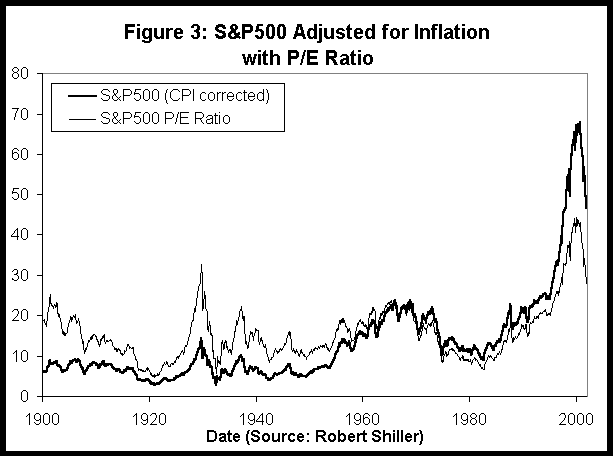|
|||||||||||||||||||||||||||||||||||||||||||||||||||||||||||||||||||||||||||||||||||||||||||||||||||||||||||||||||||||||||||||||||||||||||||||||||||||||
|
|||||||||||||||||||||||||||||||||||||||||||||||||||||||||||||||||||||||||||||||||||||||||||||||||||||||||||||||||||||||||||||||||||||||||||||||||||||||
|
Graham Revisited
Last December I reviewed the MSN.com stock screener and found nine stocks that fit Benjamin Graham's guidelines for defensive investors. In this article I look at how these stocks have performed and provide this year's list of candidates. Graham outlined his rules for defensive investors in The Intelligent Investor (ISBN 0060155477) which was first published in 1949 and can still be found in bookstores today. Graham's time tested rules are outlined in Figure 1 and should only be applied to industrial stocks. Unfortunately, few stocks meet Graham's stringent rules for earnings growth at a low price and his method often rejects all stocks as unsuitable.
The MSN.com stock screener uses only five years of data on each stock and, as a result, Graham's rules were trimmed down (See Figure 2). Even with these relaxed rules only nine stocks were found last year.
By August last year's Graham stocks no longer qualified as defensive investments. Why? At the time, they had all increased in price and, as of August 16, had achieved an average capital gain of 39.7%. Regrettably, September was difficult and by October 29 the stocks had returned only 20.4% (See Table 1). Mind you, +20.4% is still far ahead of the S&P 500 which was down 21.2% in the same period.
Of last year's picks, Rollins Truck (RLC) was the clear winner having gained 82% by the time it was bought by Penske Truck. Thor Industries (THO) was also strong, up 67.4%, due to acquisitions and improved investor confidence. The big loser of the year was AAR Corp (AIR), a trader of used aircraft, who's stock was up nicely this summer but fell by over 50% after the tragic events of September 11. The new list of Graham stocks found by the MSN.com stock screener is shown in Table 2. There are only five candidates this year which indicates that stocks, as a whole, are still expensive. Only Haverty Furniture (HVT) remained a good defensive pick despite a gain of 26%. I mentioned MDC Holdings (MDC) as a potential purchase in the Rothery Report and it remains my favorite of this year's Graham stocks.
As always, before investing, discuss any move with your financial advisor and check MSN.com for any changes. The MSN.com screener requires a small download but you'll find that it is well worth the time. http://moneycentral.msn.com/articles/common/finderpro.asp Capital preservation is hard at the best of times and Figure 3 shows that it may be impossible under current circumstances. Market declines tend to end when the market's price-to-earnings ratio falls below ten which is much lower than the present level near 29. More disturbing, despite market weakness, the S&P 500 is still as expensive as it was in 1929 and even with stable earnings it would require a 65% fall to achieve a price-to-earnings of ten. For this reason, I am pessimistic and fear that most equity investors are likely to lose money in the next decade. As noted in my previous Canadian MoneySaver article, I suggest reducing debt and considering spending more. Personally, my portfolio is still about 85% in stocks and I hope to ride through with a combination of careful stock selection, control and patience. Selecting individual stocks that are inexpensive in relation to stable earnings or tangible book value and that have little debt should help to ensure both corporate and portfolio survival. Also, by holding individual securities I can time purchases and sales to minimize taxes and avoid some of the pitfalls associated with mutual funds. With funds, other unit holders may run for the exit and force the manager to sell low or they may harangue the manager into buying more flashy and expensive stocks. Finally, as opposed to most retirees, I am still young and hope to be investing for the next fifty years. As a result, I can be more patient and ride through a prolonged downturn. However, even with these advantages, obtaining a positive real return will be challenging.  Additional Resources:
First published in the December 2001 edition of the Canadian MoneySaver magazine. |
|||||||||||||||||||||||||||||||||||||||||||||||||||||||||||||||||||||||||||||||||||||||||||||||||||||||||||||||||||||||||||||||||||||||||||||||||||||||
| |||||||||||||||||||||||||||||||||||||||||||||||||||||||||||||||||||||||||||||||||||||||||||||||||||||||||||||||||||||||||||||||||||||||||||||||||||||||
| Disclaimers: Consult with a qualified investment adviser before trading. Past performance is a poor indicator of future performance. The information on this site, and in its related newsletters, is not intended to be, nor does it constitute, financial advice or recommendations. The information on this site is in no way guaranteed for completeness, accuracy or in any other way. More... | |||||||||||||||||||||||||||||||||||||||||||||||||||||||||||||||||||||||||||||||||||||||||||||||||||||||||||||||||||||||||||||||||||||||||||||||||||||||